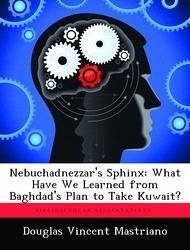Nicht lieferbar

Operational Communications: What does it Take?
Versandkostenfrei!
Nicht lieferbar
This monograph determines what is needed to allow a corps signal brigade to provide operational communications in support of modern joint operations. It focuses on the corps signal brigade in Europe because of the potential for that corps commander to act as a Joint Task Force (JTF) commander in combat or non-combat operations, within the greater European theater. Since his signal brigade is primarily oriented on tactical operations, it is reasonable to surmise that additional assets may be required to support operational warfighting requirements, which include communications links to naval an...
This monograph determines what is needed to allow a corps signal brigade to provide operational communications in support of modern joint operations. It focuses on the corps signal brigade in Europe because of the potential for that corps commander to act as a Joint Task Force (JTF) commander in combat or non-combat operations, within the greater European theater. Since his signal brigade is primarily oriented on tactical operations, it is reasonable to surmise that additional assets may be required to support operational warfighting requirements, which include communications links to naval and air component commands. The monograph first addresses distinctions between tactical and strategic communications with roots in the birth of the Signal Corps in the Civil War, when military and commercial interests vied for the distinction of providing telegraph service to the military. The monograph then traces the development of the signal organizations that provided operational support to corps from the 1860s to the 1960s. This grew from a tactical telegraph company to a large battalion by the end of Vietnam, and became a brigade in the 1980s as requirements for communications support continued to grow. The monograph next discusses modern operational communications as provided in the recent Operations Desert Shield/Storm and Uphold Democracy. These actions required synchronized joint and combined operations, and can be characterized by the number of diverse communications organizations and assets brought together to perform. In neither case did the conventional corps signal brigade possess enough long-range transmission or data or voice switching assets to accomplish the mission. The monograph details those assets and capabilities that were required. The monograph concludes that a composite organization, comprising assets common to corps signal brigades and theater signal brigades, may provide enhanced support to the Army corps commander when acting as an operational JTF c










